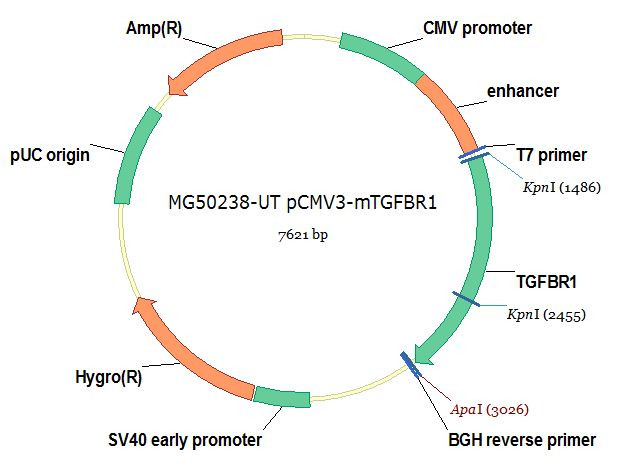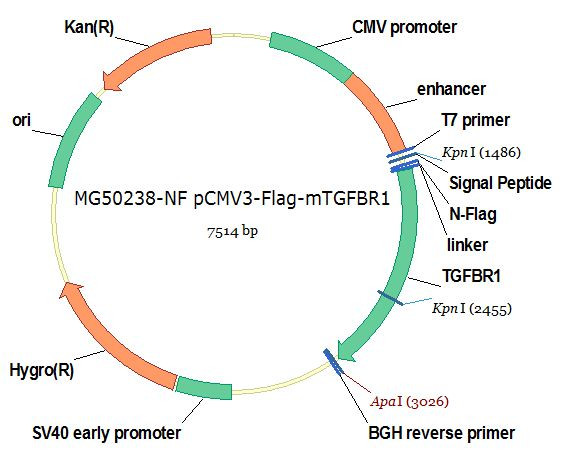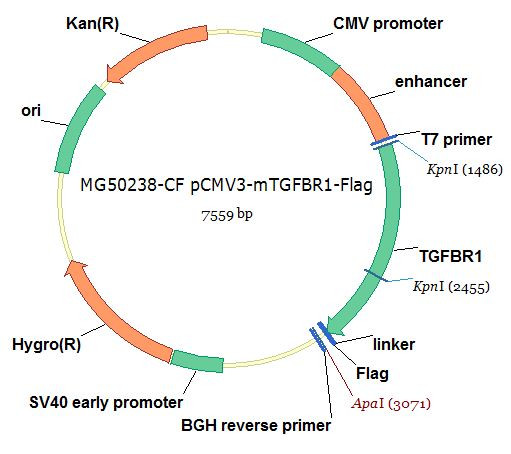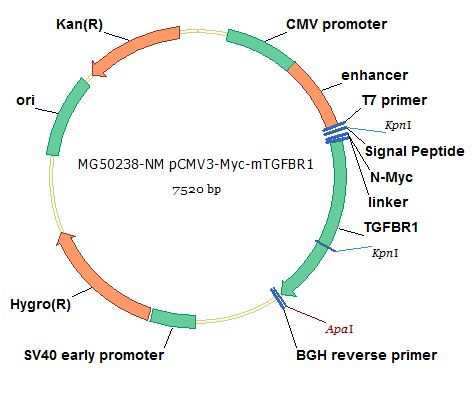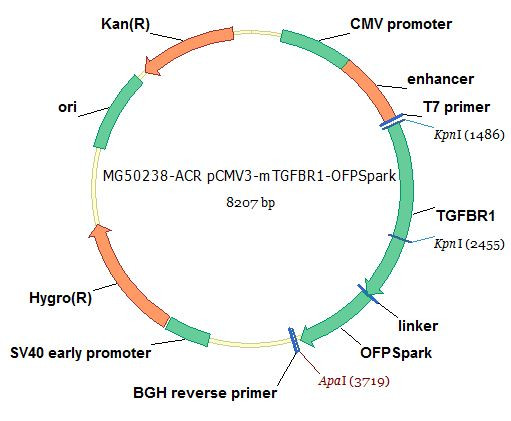Tgfbr1
| Gene Symbol | Tgfbr1 |
|---|---|
| Entrez Gene | 21812 |
| Alt Symbol | ALK5, AU017191, Alk-5, TbetaR-I, TbetaRI |
| Species | Mouse |
| Gene Type | protein-coding |
| Description | transforming growth factor, beta receptor I |
| Other Description | ESK2|TGF-beta receptor type I|TGF-beta receptor type-1|TGFR-1|transforming growth factor-beta receptor type I |
| Swissprots | Q64729 A2AJN0 |
| Accessions | CAT04599 EDL02353 Q64729 AK007125 BAB24865 AK015337 BAB29802 AK153796 AK154381 BAE32548 BC063260 AAH63260 CT010393 CAJ18600 D25540 BAA05023 D28526 BAA05878 XM_006537756 XP_006537819 XM_006537757 XP_006537820 NM_009370 NP_033396 |
| Function | Transmembrane serine/threonine kinase forming with the TGF-beta type II serine/threonine kinase receptor, TGFBR2, the non-promiscuous receptor for the TGF-beta cytokines TGFB1, TGFB2 and TGFB3. Transduces the TGFB1, TGFB2 and TGFB3 signal from the cell surface to the cytoplasm and is thus regulating a plethora of physiological and pathological processes including cell cycle arrest in epithelial and hematopoietic cells, control of mesenchymal cell proliferation and differentiation, wound healing, extracellular matrix production, immunosuppression and carcinogenesis. The formation of the receptor complex composed of 2 TGFBR1 and 2 TGFBR2 molecules symmetrically bound to the cytokine dimer results in the phosphorylation and the activation of TGFBR1 by the constitutively active TGFBR2. Activated TGFBR1 phosphorylates SMAD2 which dissociates from the receptor and interacts with SMAD4. The SMAD2-SMAD4 complex is subsequently translocated to the nucleus where it modulates the transcription of |
| Subcellular Location | Cell membrane {ECO:0000250}; Single-pass type I membrane protein {ECO:0000250}. Cell junction, tight junction {ECO:0000250}. |
| Top Pathways | TGF-beta signaling pathway, Hippo signaling pathway, Adherens junction, Chronic myeloid leukemia, Colorectal cancer |
Search more
